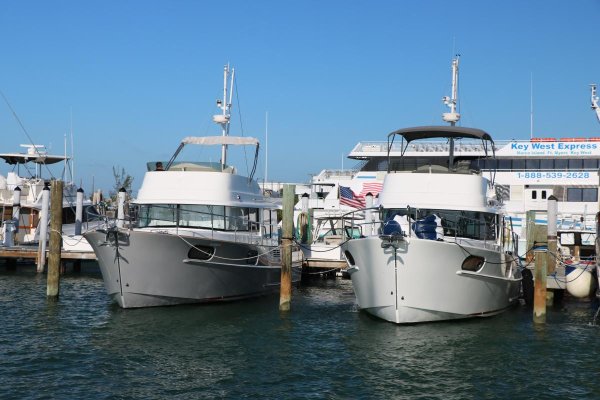When cruising, especially at higher RPM for longer periods, I pop into the engine room every couple of hours with a temperature gun and do some cross checking just for peace of mind. When I took my "
Ask Captain Chris" boat systems class, he suggested doing this and I found that my temp gauge at the helm is off by about 5 degrees low on port.
I take readings from both engines: Transmission, Exhaust Manifold, Turbo, Top of Engine, Middle near the injectors, Oil Pan. I can also read the starboard alternator without going down between the engines so I check that as well. The two engines typically only vary by about 3-4 degrees point to point.
My base temps on the top of the engines, injectors, and exhaust manifold run around 145 - 150 degrees, alternators 130, oil pan runs 150 - 160 degrees, and top of the turbo runs 170 - 180 degrees. So the turbo is the hottest item on the engine.
I did this a few times on a couple of day trips to get the averages at both high and low rpm for extended periods. Interestingly I found only about a 5 degree difference running at 1200 RPM for two hours and running at 2800 RPM for two hours. I keep a little cheat sheet on the engine room hatch so that when I read, I can quickly compare.
Note: If you are going to check your temps underway, I suggest spending a little extra and getting a good quality infrared temperature gun that has a high optical resolution like 10:1 or 12:1. This will give you a small reading area so you can shoot from the engine room hatch at a distance, rather than climbing into the engine room while underway.
I use an
Etekcity Lasergrip 630 that has a 12:1 or 8:1 adjustable. Very happy with it. Got it from Amazon for $26.00. This replaced the Harbor Freight $8 gun that I wanted to chuck overboard (but just put in the trash to follow my garbage plan)

.
A couple of other interesting experiments with your temp gun are:
Confirm fuel level in the tanks. My fuel gauges were not working for a while, so after running for an hour or two I could shoot the side of the tanks (visible in my engine room) and see where the fuel level was. The hot diesel re-circulating back into the tanks was measurably warmer when reading the tank walls so I could get a good eyeball on the fuel level.
Also, check the temps about 5 minutes after you turn off the engines. They spike for a few minutes after cooling water stops circulating. The block on mine get's up to about 180 degrees. Not sure it this has any meaning, but I found it intresting. It feeds my inner Geek!

 .
.